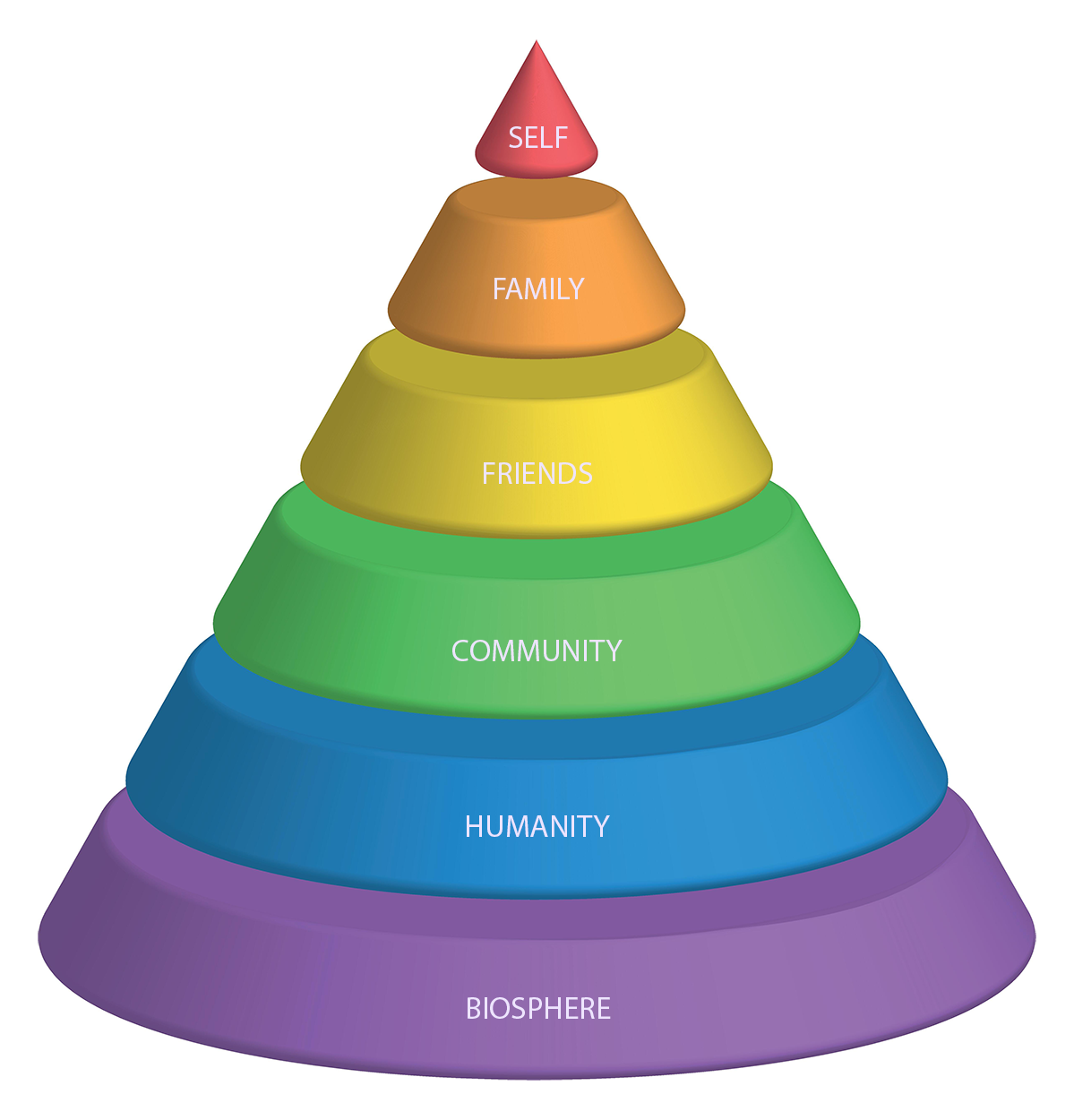The Stoic Circles of Concern
Tanner Campbell
The Circles of Concern are well-known within Stoicism; dreamed up by Hierocles to show an order of concern with the self at the center. The biosphere was added a few years ago by Kai Whiting and Leonidas Konstantakos (and others) to show that our concern should extend to non-human animals and the environment. This is my own ugly artwork, I didn't want to borrow from others.

This view obscures something important about Stoic ethics
From this perspective, one might get the impression that the Ancient Stoics saw our concerns being unidirectional; from the inside out. Self is always the first priority, because without a healthy (perhaps virtuous) self, no outward circles can be appropriately cared for or looked after.This isn't entirely untrue. The aim of Stoicism is the attainment of Virtue, which is knowledge, which happens in your mind. Clearly, however, the Ancient Stoics had concerns beyond the attainment of knowledge - if not, these circles wouldn't exist at all. The Circles of Concern are a way of visualizing Oikeiosis or, more specifically, "oikeiotic" responsibility. It's meant to show that other things matter beyond the self and that we should care for them.I think this fails to show an important part of the picture. Namely, why other things matter.
The Pyramid of Concern
If we pinch the middle of the Circles of Concern, and pull up, we can extrude a conical pyramid which I am calling the "Pyramid of Concern" because "Conical Pyramid of Concern" is just a little bit wordy.

Each lower level is foundational to the stability of each higher level. This is another way of seeing the importance of circles beyond the self.
This new shape provides another way to conceptualize the importance of things beyond the self. This isn't meant to communicate a hierarchy any more than the Circles of Concern are meant to communicate that the self can be the sole focus of a person's involvement in the Cosmopolis. Instead, this pyramid is meant to show the things beyond the self which enable the self to thrive.The Circles of Concern suggests we bring all circles beyond the self "in a level" until we've collapsed all these circles into the self, and there is just one circle. But we cannot look after our family without looking after our biosphere, humanity, or our communities, et cetera.What I think this new shape does is allow us to more easily visualize how care of those outside rings directly impact our ability to care for each closer ring. This, I think, more clearly communicates the why behind the Stoic directive to care about those circles beyond the self. They aren't distant from us, they support and enable us. If we don't care for them, we cannot care for ourselves.I'm interested in advancing this idea and concept. I'd like to word it more eloquently and refine the value I think this three-dimensional view of the Circles of Concern brings to the table. Please feel free to reach out to me if you'd like to add your input.
Mentions
The Pyramid of Concern will be put forth in an official capacity for the first time in "What Is Stoicism?" (New World Library, Fall 2024), a book I co-authored with Dr. Kai Whiting. Kai and I worked together on naming the Pyramid of Concern, spending some hours on whether it was fair to call a conical pyramid just "a pyramid". It was also Kai who convinced me this was a good idea and worthy of pursuit as a formal contribution to the contemporary Stoic community. Thanks also to G.C., who worked on an early illustration of the Pyramid of Concern.
© 2024 Tanner Campbell